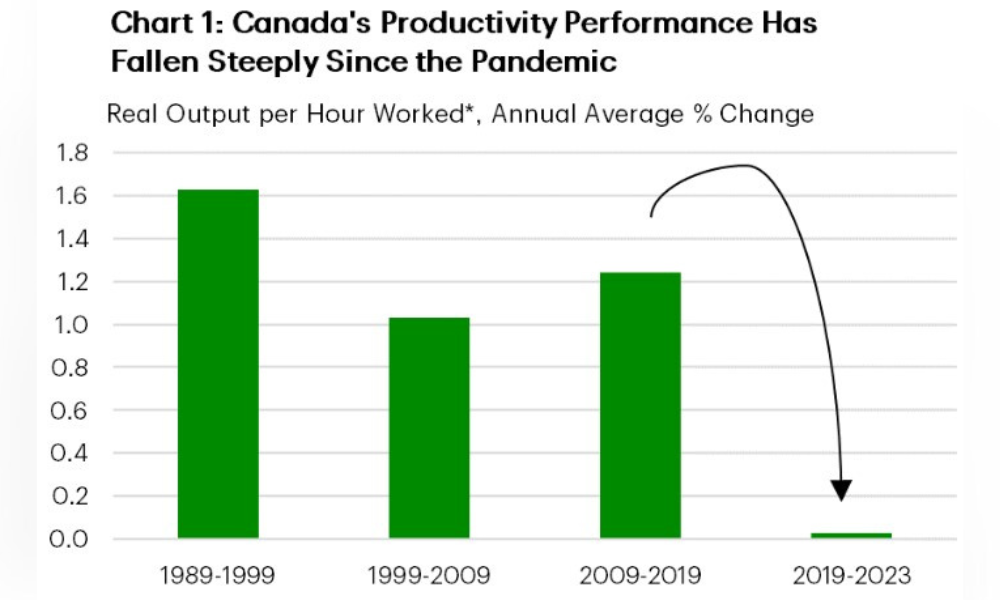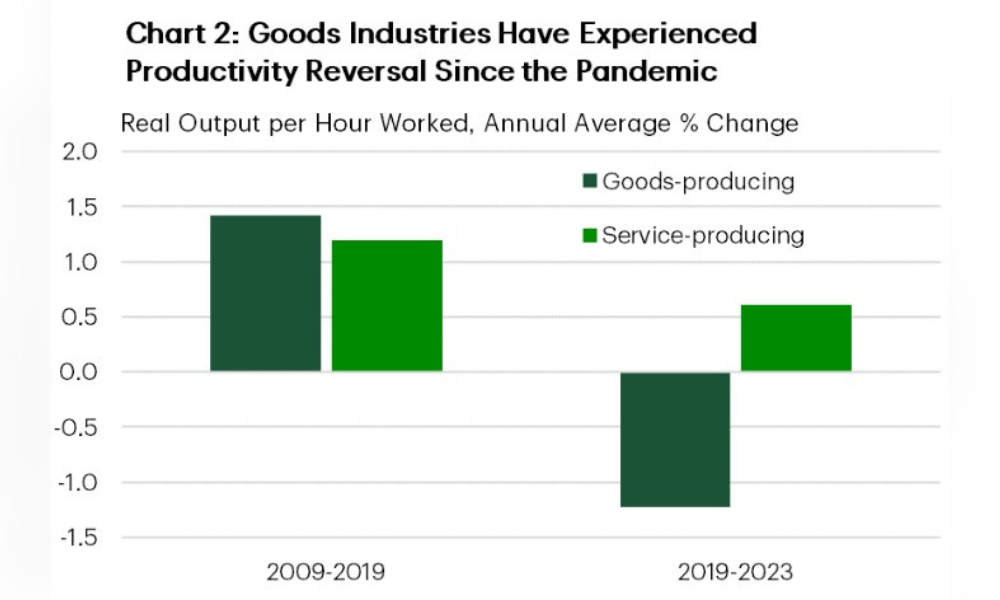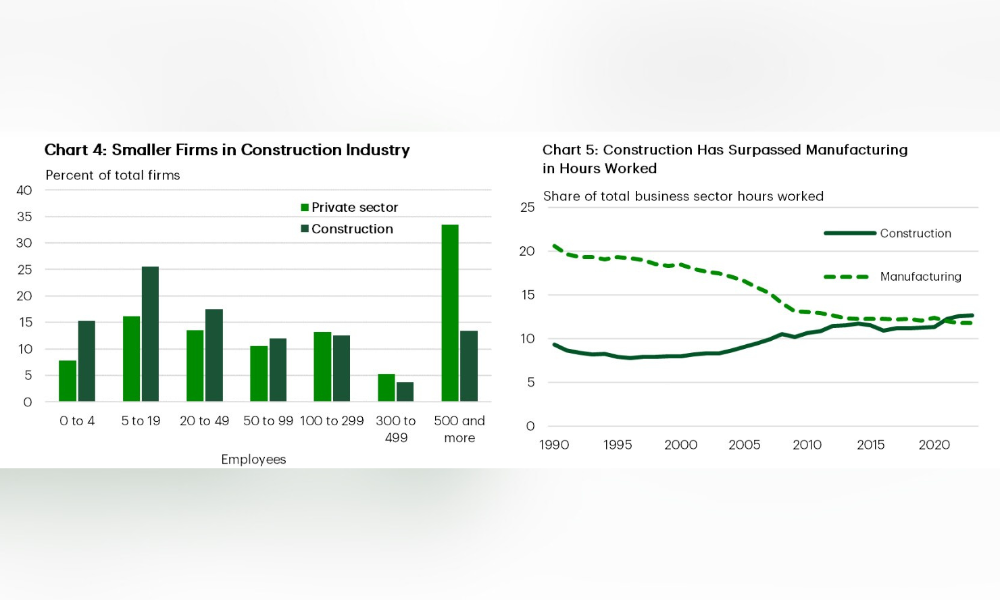For service industries, 'greater reliance on non-permanent residents appears to have contributed to the productivity deterioration': TD Economics

There are several factors that are leading to the productivity slump that Canada has been experiencing since the COVID-19 pandemic, according to experts from TD Economics.
Over the decade prior to the pandemic, business sector productivity grew by a respectable rate of 1.2 per cent annually.
Since 2019 however, it has ceased to expand at all, they note.

Source: TD Economics
What’s causing low productivity in Canada? For one thing, the country’s economy is primarily one of services. And over the past two decades, the combined activity of goods sectors – agriculture, utilities, manufacturing, and construction – has fallen from one-third to a quarter of the Canadian economy.
But labour productivity is over 30% higher than in the service sector, says the report.
“Since the pandemic, with the exception of agriculture, forestry, hunting and fishing, productivity growth within goods-producing industries has not only slowed but has outright reversed,” said Beata Caranci, SVP & chief economist, and James Marple, AVP & senior economist, both at TD Economics.
“From an annual increase of 1.4% in the decade prior to the pandemic, it has declined by 1.2% annually since. As a result, the goods sector has subtracted an average of 0.4 percentage points from Canada’s overall productivity growth every year since the pandemic. Had the sector just stayed flat, Canada’s pace would have risen 0.5% annually.”

Source: TD Economics
The labour productivity of Canadian businesses dropped in the second quarter of 2024, according to a report from Statistics Canada (StatCan).
Construction has generated no productivity growth over the past 40 years. That is the case even though construction has surpassed manufacturing in hours worked, according to the TD Economics experts.
“In 2023, the construction sector represented 12.6% of all labour hours worked in Canada, up from 8% in 1997. Isolating to just the goods-producing sector, construction hours worked now exceed those in manufacturing, nearly doubling from 23% in 1997 to 42% of today,” Caranci and Marple said.

Source: TD Economics
Another problem is that, for service industries, “greater reliance on non-permanent residents appears to have contributed to the productivity deterioration since the pandemic,” they said. “This may seem counterintuitive amidst an aging labour force, but the concentration of non-permanent residents in low paid work has worsened Canada’s productivity performance.”
Canada's lax immigration policy in the post-COVID period is making the country poor, one expert previously claimed.
How to fix Canada’s productivity problem
To solve Canada’s productivity woes, Caranci and Marple suggested that the federal government focus on:
- Tax reform to maintain competitiveness – Simplify and broaden tax codes, reduce tax rates on investment and maintain Canada’s competitive advantage.
- Concerted effort to lift construction sector productivity – Break down jurisdictional barriers to growth, encourage scaling and allow construction to thrive with smarter regulations.
- Eliminate barriers to investment – Reduce regulatory fragmentation, promote labour mobility and increase investor transparency.
If deployed correctly, generative artificial intelligence (AI), could help reverse a decades-long decline in productivity and add almost two per cent to Canada’s GDP, according to previous research from The Conference Board of Canada in partnership with MaRS Discovery District.




